How does a plane fly? Understanding Different Parts of the Aircraft
Explore further how an airplane flies in the sky
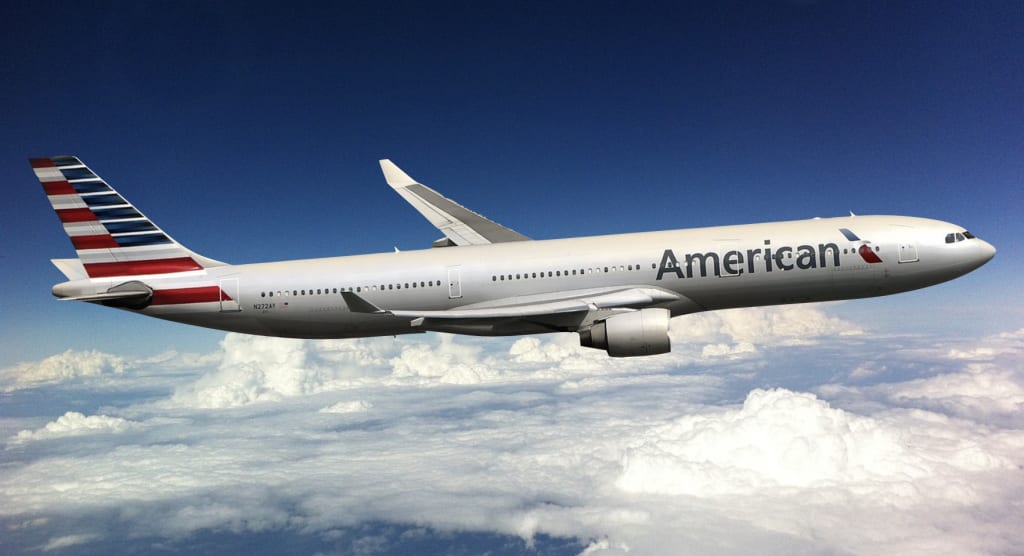
How does an airplane fly?
This is one of the most intriguing question we ask ourselves since childhood. Whenever we watch an aircraft flying across the sky, we wonder, how such a heavy object can effortlessly navigate through the air.
In the previous article, we learned the basic principles of flight, which will act as a foundation for the discussion here.
In this article, we will delve deeper into a more comprehensive understanding of flying, and discuss the basic principles behind takeoff and cruising during a flight.
This material is copyrighted by the author. Please do not republish, copy, or sell this material without exclusive permission from the author of this article. The images used in this article are sourced from the public domain. Links are provided at the end of this article.
Basic aircraft parts
Before we go into the details of flight, let us first look at the overview of the airplane components (Refer figure).
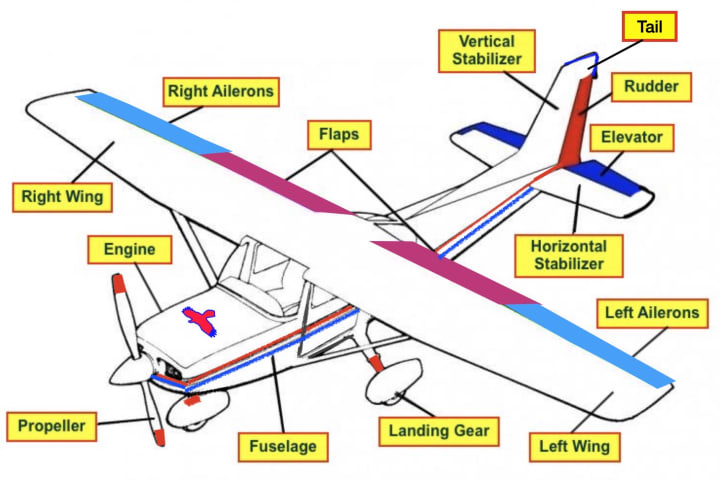
The simple overview of the different parts of an airplane are:
- Fuselage - This is the main body of the airplane. This consists of the cockpit, where the pilot and copilots sit, the passenger cabin, and the cargo area.
- Wings - These are the large, flat surfaces on either side of the fuselage that generate lift and keep the airplane in the air. Wings have two main controls: Flaps and Ailerons.
- Flaps can be adjusted to increase the surface area of the wings and thus control the amount of lift and drag.
Pilots control the flaps through a series of lever movements. Extending the flaps increases the surface area, while retracting them reduces it.
- Ailerons are flat moving surfaces attached close to each end of the wings.
The ailerons allow the pilot to rotate the plane either towards the left or the right. The ailerons are controlled by moving the yoke, or rotating the control wheel to the right or left. (Refer two figures with ailerons and flaps)

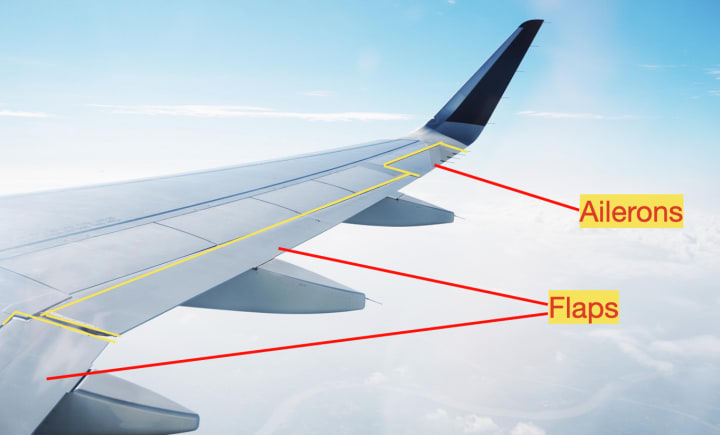
- Engines - These are usually located either on the front of the fuselage in a single-engine airplane or on the wings in a jet airline.
Engines provide the thrust to propel the airplane forward. They can be jet engines, turboprop engines, or piston engines depending on the type of airplane (Refer figure).
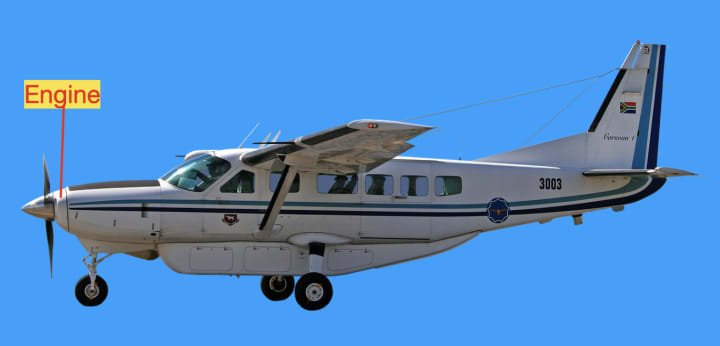

- Tail - The tail consists of two stabilizers, a horizontal stabilizer, and a vertical stabilizer (Refer figure).

- Horizontal stabilizer is a flat moving surface attached at the rear of the horizontal portion of the tail on both the left and right sides of the aircraft. This includes a moving flat surface called “elevators”.
- Vertical stabilizer is a flat surface which includes a “Rudder”, which is a single tall, flat moving surface attached at the back of the vertical section of the tail.
The elevators allow the pilot to pitch the plane up or down the flight path. The elevators are controlled by either pushing or pulling up the yoke or the control wheel.
When the pilot pulls the control wheel, the elevators move up. When the pilot releases the control wheel or pushes forward on the control wheel, the elevators move down.
The tail helps to stabilize the airplane in flight. The rudder allows the pilot to move the plane sideways or yaw, as they say in aviation language. The rudder is controlled by the foot pedals.
When the pilot applies pressure on the right pedal, the rudder moves to the right, and the plane deflects to the right.
When the pilot applies pressure on the left pedal, the rudder moves to the left, and the plane deflects to the left.
- Landing gear - This includes the wheels and struts that support the airplane when it's on the ground.
The landing gear can be retractable, meaning it can be pulled up into the airplane during flight to reduce drag.
Getting the plane ready for take off
When the plane is on the runway ready to take off, the pilot pushes the throttle of the engines (Refer figure), which increases the rotation speed of the propeller in a single-engine plane or the turbofans in a jet engine.

As the propeller or the turbofans start to rotate at higher speeds, the plane begins to move forward. This movement is caused by the thrust generated by the engines.
As the plane speeds down the runway, the wings experience an increasing flow of air. The wings are designed with a curved shape to produce different airflows on the top and bottom surfaces (Refer figure).

As the plane speeds, the airflow over the curved top surface of this shape is much faster compared to the airflow on the flat bottom surface.
This results in low air pressure on the top of the wings compared to the bottom of the wings. This pressure difference produces lift, allowing the plane to rise into the air.
The fast moving air flows over the wings, generate lift. At the same time, the engines also provide enough thrust to overcome the drag caused by the resistance of the air.
The next step is to raise the nose of the plane for take off.
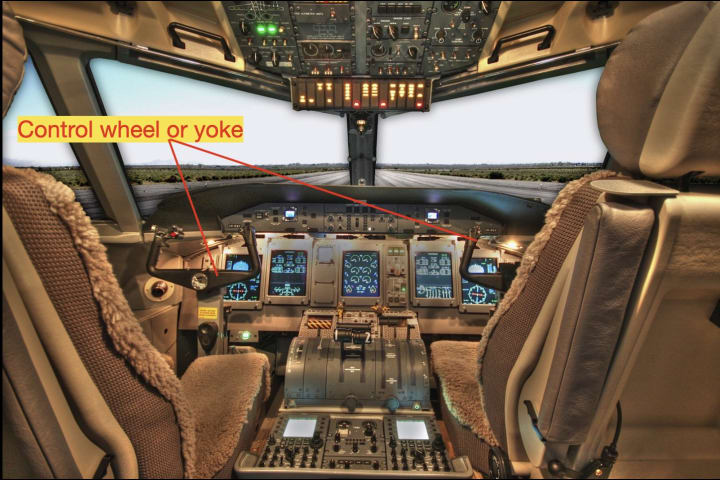
Pitching the nose up for take off
Once the plane has gained enough speed and lift, the pilot pulls back on the “elevator” controls in the tail to raise the nose of the plane off the ground.

Raising the nose of a plane is called pitching up. To pitch up, the pilot pulls the control wheel or the yoke (refer figure above) towards their body.
This raises the elevators on the trailing edge of the horizontal stabilizer on the tail. This causes the fast moving air flow over the wings to reach the tail, and hit the flat portion of raised elevators with great force.
This forced air at high speed hitting a small area of a raised elevator results in applying high pressure on the tail. This high pressure on the elevators, combined with increased lift force under the wings, raises the nose of the plane.
When the nose is raised, this increases the angle of the wings relative to the airflow, thus increasing the lift, and the plane starts climbing.
After generating sufficient lift and thrust, the plane is then able to take off. (Refer figure below)
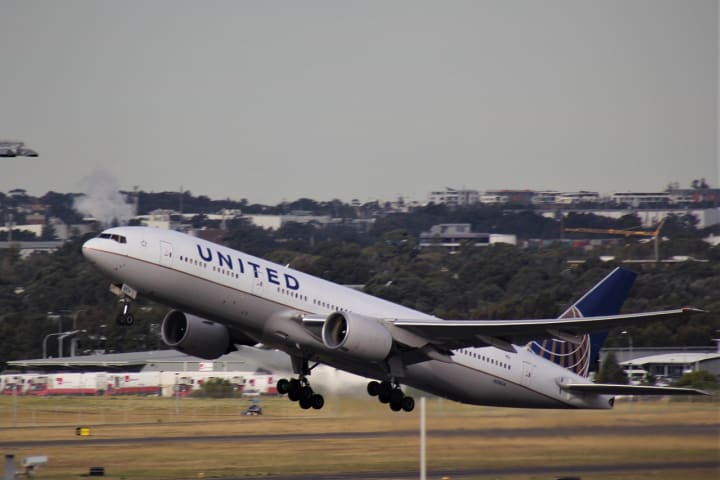
Another way of stating is, when the plane pitches up, it changes the angle of the wings relative to the airflow, which is called the angle of attack.
This changes the amount of lift generated by the wings, which in turn affects the plane's altitude. As the lift increases, the plane's nose will rise, and it will start climbing.
Once the plane is in the air, the pilot maintains the nose up attitude to keep the plane climbing to reach a certain distance above the ground.
The pilot adjusts the power of the engine and the angle of the wings to maintain a steady climb speed till the plane reaches the desired altitude and airspeed.
Once the desired altitude is reached, the pilot will level off the plane by reducing the engine power and adjusting the pitch by adjusting the elevator control to maintain that altitude.
The plane is now cruising through the air at a fixed distance above the ground. To maintain altitude, the lift generated by the wings must equal the weight of the plane.
This is called a cruise flight. (Refer two figures)


Thank you for taking the time to read this article on how a plane flies. I appreciate your interest and I hope you found it informative.
I hope that reading this article has inspired you to learn more about the planes and consider taking flying lessons in the future.
If you have any questions or comments, please feel free to share them below.
In this article, we covered aircraft parts and discussed the basic principles behind takeoff and cruising during a flight.
In the next article, we shall learn how does a pilot navigate the plane in the air by making turns, climbs, and descend the aircraft for a safe landing.
References for pictures:
- American Airlines Cruising https://pixabay.com/photos/american-airline-aircraft-travel-2721441/
- Clouds Dark Blue https://pixabay.com/photos/above-the-clouds-heaven-blue-184962/
- Wings Ailerons Flaps Better https://pixabay.com/photos/airplane-flight-chandigarh-clouds-1670266/
- Wings Ailerons Flaps Best https://pixabay.com/photos/plane-heaven-cloudiness-wing-1043635/
- Cessna Engine https://pixabay.com/photos/plane-cessna-caravan-flying-2975017/
- Turbo Jet Engines https://pixabay.com/photos/jet-engine-aviation-aircraft-plane-4688927/
- Tail rudder elevator good https://pixabay.com/photos/tail-of-b-707-boeing-jet-cargo-2479255/
- Pilot pushing throttle to increase engine power https://pixabay.com/photos/perfomance-power-cockpit-jet-pilot-3634627/
- Airflow and lift diagram is authors rendition
- Cockpit with control wheel or yoke https://pixabay.com/photos/cockpit-plane-airplane-jet-100624/
- Pilot pulling back on the control wheel https://pixabay.com/photos/pilot-airplane-cockpit-fly-flying-4944874/United Airlines
- United Airlines 767 plane taking off https://pixabay.com/photos/united-airlines-boeing-767-take-off-4798787/
- Jumbo jet 747 cruising through the skyhttps://pixabay.com/photos/plane-airplane-clouds-flight-3251802/
- Jumbo jet 747 Transaero on a cruise flight https://pixabay.com/photos/plane-boeing-747-transaero-airlines-1382942/
About the Creator
Raghavendra S Rao
Passionate about life, people, animals, nature, and surroundings. Love flying airplanes. Educate everyone in various phases of life. Love technology. Learn new things. Help and contribute time and money to the less fortunate.






Comments
There are no comments for this story
Be the first to respond and start the conversation.